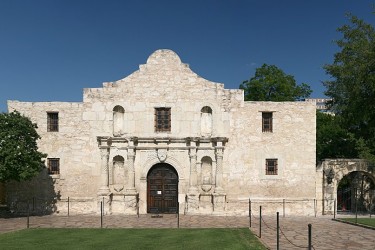When the 15-member Texas State Board of Education voted preliminarily last Friday on streamlining cuts to the state’s social studies curriculum, it made its usual splash. The verdict: Moses (whose “principles of laws and government institutions informed the American founding documents”), the “heroic” defenders of the Alamo and the “Arab rejection of the State of Israel” as the source of Middle East conflict stay in. Hillary Clinton and Helen Keller are out.
The decision to pare down the curriculum is a wise one. Texas students are required to study so many historical figures, groups and events (over 90 possibilities are listed in the fourth-grade standards alone) that it encourages a superficial examination of any one of them. Rather than deep study of cause and effect, young Texans come to equate history — and other fields within the social studies — with the joyless pursuits of chronicling and summarizing.
And yet, the removal of two women, one emblematic of early disability movements and the other our nation’s first female major-party presidential nominee, once again reveals that these are politically driven choices to favor a conservative, religiously inflected curriculum rather than educational ones designed to encourage critical thinking and analysis. The result is a curriculum that does a poor job of teaching the complexities of American history and does little to inspire students to engage with history in ways that are important to building a brighter American future.
Since 1917, when Texas law authorized the state board to purchase textbooks for all of its schools, a small group of people has held a great deal of power over what young Texans learn and how. And that group of people, largely non-educators, has long been influenced by conservative activist groups.
In the early 1920s, religious conservatives, including the Klan, induced the state board to forbid references to evolution in Texas textbooks. But they lacked sufficient political power to enact a law banning the teaching of evolution, as some other Southern states did.
It was during the Cold War that Texas conservatives truly found their footing in educational debates. The Daughters of the American Revolution allied with the recently formed John Birch Society and Texans for America to push the state board to fight communism. The board enthusiastically accepted the task. It repeatedly mandated the censorship or diminishment in history textbooks of, among others, labor unions, Social Security, the United Nations, racial integration and the Supreme Court. It compelled the inclusion of “the Christian tradition,” the free market and conservative heroes Joseph McCarthy, Herbert Hoover, Douglas MacArthur and Chiang Kai-shek.
The stakes were high for conservatives. The believed seemingly pro-communist, internationalist textbooks formed American children into weak citizens and a threat to national security. Social studies textbooks, the Houston Chronicle reported, had made American POWs easy to brainwash in the Korean War and could do so again.
Texans were not alone in fighting these battles. California conservatives considered attention to the United Nations “godless, atheistic, and un-American.” Indiana’s state board voted to cut Robin Hood from literature textbooks because he represented the “straight communist line.”
Yet even for the time, the fervency and reach of Red Scare politics in Texas stood out. In urban and rural areas alike, social conservatives, including evangelical Christians and segregationists, banded with economically driven opponents of federal power as they had not before. From Amarillo to San Antonio, textbook hearings drew parents, community members and local journalists who championed conservative censorship. Liberals, less cohesively organized, risked being charged with subversion if they spoke out. Texas officials made textbook authors and teachers sign loyalty oaths. Publishers quickly complied with the demands of the Texas board.
Today, in a changed political atmosphere, liberals still lack voice on the state board. Democrats occupy just five of 15 seats. Most members lack any public school teaching experience.
And all of this has a deep national impact. Even with the adoption of the Common Core State Standards elsewhere, Texas has maintained a special sway over the content of textbooks that serve students across the United States. During the Cold War, Texas shaped the work of every major national textbook publisher. Today, one of every 10 public school students in the United States is a Texan, and publishers still don’t want to print books that can’t be used in the state.
This has remained true even though Texas school districts have been allowed to independently adopt textbooks since 2010, so long as all state standards are taught and addressed. The change, initiated after a national uproar over the adoption of the “Moses standard,” has hardly led to better choices. In 2015, a Houston parent used social media to expose a geography textbook’s representation of slaves as “workers,” an inaccurate and disingenuous depiction that invariably stemmed from conservative activism. That textbook alone was assigned to 100,000 students.
Its substance reflected what University of Texas professor Robert Shattuck called in 1963 a “tears in my eyes” approach to history instruction, one that emphasizes hagiography and romanticism. More than the inclusion of any particular event or figure, it is this deeply simplistic, often anti-historical approach that presents the greatest obstacle to Texas students learning how the past can inform contemporary problems and debates.
Take, for example, “the siege of the Alamo.” Practically every one of Texas’s 254 counties has schools named after David Crockett and William Travis, and students should know why. But the lesson shouldn’t focus on whether the men were brave or brazen. Rather, it should delve into why and how the battle of the Alamo was fought. Students should learn that the Alamo skirmish was produced by the relationship of Anglo Texan settlers to slavery, indigenous removal, land speculation and Mexican statehood. The factors that led to the battle also shaped when and how Texas became a state.
Yet studying the political and social movements that produced the Alamo siege is an entirely different pursuit from studying “all the heroic defenders who gave their lives there,” as state standards dictate (the teacher task force recommended dropping this language of heroism but was rejected). It may be less optimistic, but it is far more truthful, relevant and interesting. We build statues to honor heroes; we study history to pursue complex, sometimes difficult questions. Texas’s standards confuse the two, turning history into a frozen story line devoid of the necessary context.
And this dangerous “great men and women” approach to history instruction is the provenance of neither Texas nor political conservatives alone. Every group wants its heroes to be taught, whether that person be Billy Graham or Hillary Clinton — and often with equal simplicity. While some figures have stronger cases for inclusion, the end result is the same: a bloated curriculum that offers a quick rehearsal of many simple story lines, decontextualized facts and fragmented, disconnected events.
This approach fails to teach students about the often complicated, sometimes painful reality of our nation’s history, with its equal parts violence, dispossession and disenfranchisement and democracy, individual freedoms and justice. More broadly, it does startlingly little to engage or invite students into doing history. If students have tears in their eyes, they are unlikely tears of inspiration so much as boredom.
Texas’s frequently bizarre and sometimes entertaining public education debates can encourage all of us to evaluate whether the history being taught in our schools offers learners a sense of a usable past. Only when that happens will our students have a full and fair understanding of their country and an invitation to becoming the deepest-thinking citizens they can be.




















